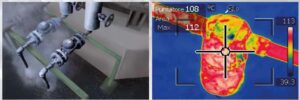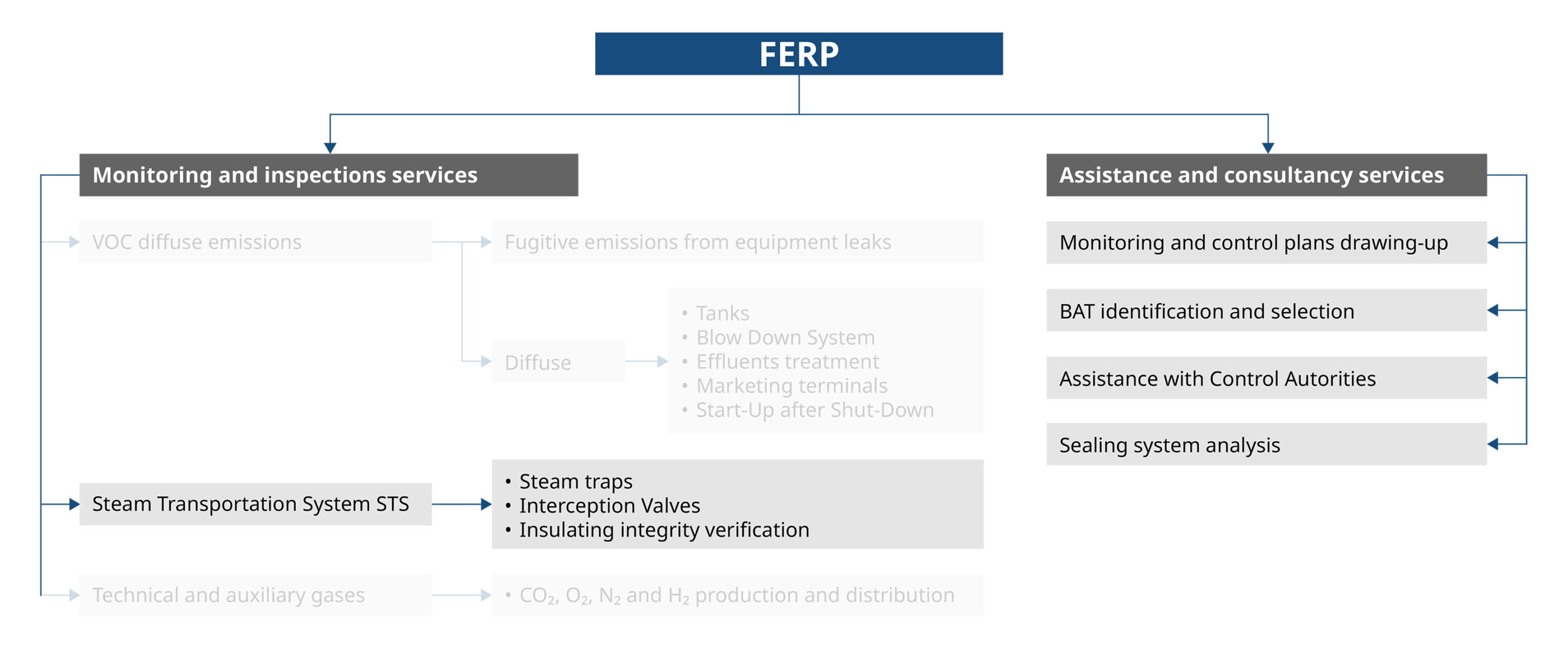LDAR – Leak Detection and Repair – applied to STS – Steam Transportation System

There are several ways to inspect steam transport system leaks. A simple visual inspection can detect many leaks, such as leaks from joints, valves, and pipes. Another method for inspecting leaks is to use a leak detector. Leak detectors can detect even very small leaks that are not visible to the naked eye.
The efficiency of steam traps and the integrity of all equipment through which steam flows (steam drains, shut-off valves, steam lines) has positive implications from a technical and economic standpoint. FERP approaches monitoring by exploiting the interaction of two different technologies:
- thermal infrared;
- ultrasonics.
Steam leaks from steam traps represent a significant energy loss (therefore a loss of resources and an increase in CO2, SOx and NOx generation), the values of which can be accurately quantified.
In a steam distribution network, where a structured monitoring and control plan is not in operation, it is estimated that over 20-30% of the steam traps are out of service, interfering with the normal activity of the steam network also due to water hammer and lack of degassing.
With the same LDAR (Leak Detection And Repair) approach adopted for fugitive emissions and with the help of the FERPRO software, it is possible to create a database where each component is catalogued, located and qualified.
FERP and Carrara SPA want to emphasize that their intervention is independent from the producers of steam traps and, unlike the competition, can boast total independence.
The activity of detecting steam traps can be carried out jointly with the main LDAR program aimed at fugitive emissions, thus obtaining evident synergies and cost-effectiveness.
This is also interesting in the context of the application of ISO 50001.
